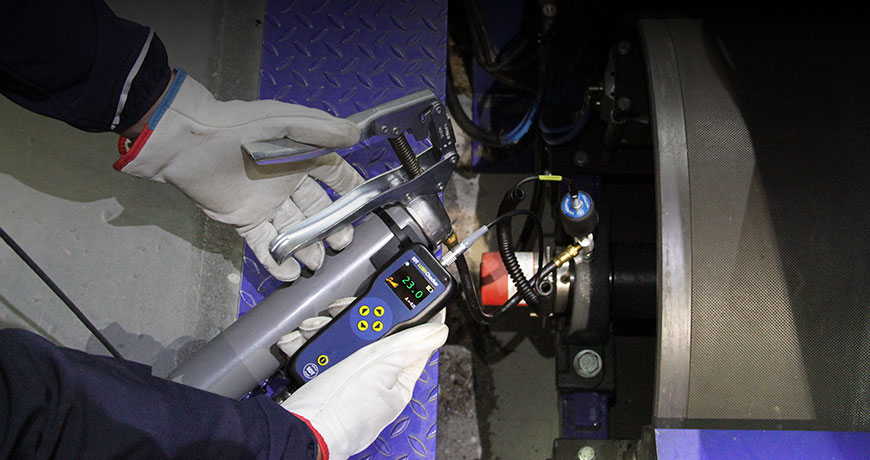JUNE 2019 – PUMPS AND SYSTEMS

Condition monitoring helps manage over-lubrication.
Ultrasound is a guide to precision grease replenishment in motor bearings. It is also known for its versatility for leak detection, valve assessment and electrical fault detection.
Acoustic lubrication is an integral component of ultrasound programs. Fewer than 95 percent of all roller bearings reach their full engineered life span, and lubrication is the culprit in most cases. In fact, poor lubrication practices account for as much as 40 percent of all premature bearing failures. Yet, when ultrasound is used to assess lubrication needs and schedule grease replenishment intervals, that number drops below 10 percent. What would 30 percent fewer bearing related failures mean for an organization? Download our 5-STEP Acoustic Lubrication Procedure – An effective lubrication procedure to grease bearings right
To understand the role precision lubrication plays in bearing life extension, it helps to understand basics of bearings, their lubrication mechanism and how ultrasound helps.
The insides of a bearing consist of four components. The inner and outer raceways form a path for the rolling elements to glide on a thin film of lubricant. A metal cage separates the rolling elements, keeping them evenly spaced to distribute the load and stop them from crashing into one another. These components move in concert producing frictional forces from rotational inertia, surface load, misalignment, imbalance and defects. Zero friction is impossible, but optimal levels of friction are achievable with correct installation techniques and proper amounts of lubricant. Download our Induction Heating Procedure – Bearing Mounting – A simple and safe procedure for proper bearing installation
Ultrasound works on the FIT principle—it responds well to defects that produce friction, impacting and turbulence (FIT). For motor bearings, two of these phenomena apply: friction and impacting. Ultrasound detects high-frequency signals produced when two surfaces slide together or come in contact with any force. Stage 1 bearing failures happen at the micro level. Because ultrasound ignores low-frequency audible signals, it forms the perfect companion for measuring, trending and analyzing defects despite high levels of noisy interference encountered on the factory floor.
Ultrasound detectors detect friction and impacting as acoustic energy from rolling friction and defect impulses. When lubricant levels are optimum, the energy created is at its lowest. As frictional forces increase, so does the acoustic energy. Ultrasound instruments measure friction and impacting as energy using the scaled value dBµV (decibels/microvolt). The results are presented as condition indicators, and there are four of them:
- root mean square (RMS)—an indicator of friction
- maxRMS—an indicator of stability
- peak—an indicator of impacting
- crest factor—which surmises the relationship between friction and impacts
Condition indicators are most responsible for transforming ultrasound technology from a simplistic, “point the gun and pull the trigger” gadget, to being recognized as analysis and trending technology. Condition indicators add validity to trending by going beyond the single decibel. If a user currently uses an ultrasonic gun that does not have condition indicators, they should question the data. Click here to read the entire article “Use Ultrasound to Optimize Grease Replenishment”
Filed under:
Articles and Case Studies, Lubrication, Ultrasound by Allan Rienstra - SDT Ultrasound Solutions
